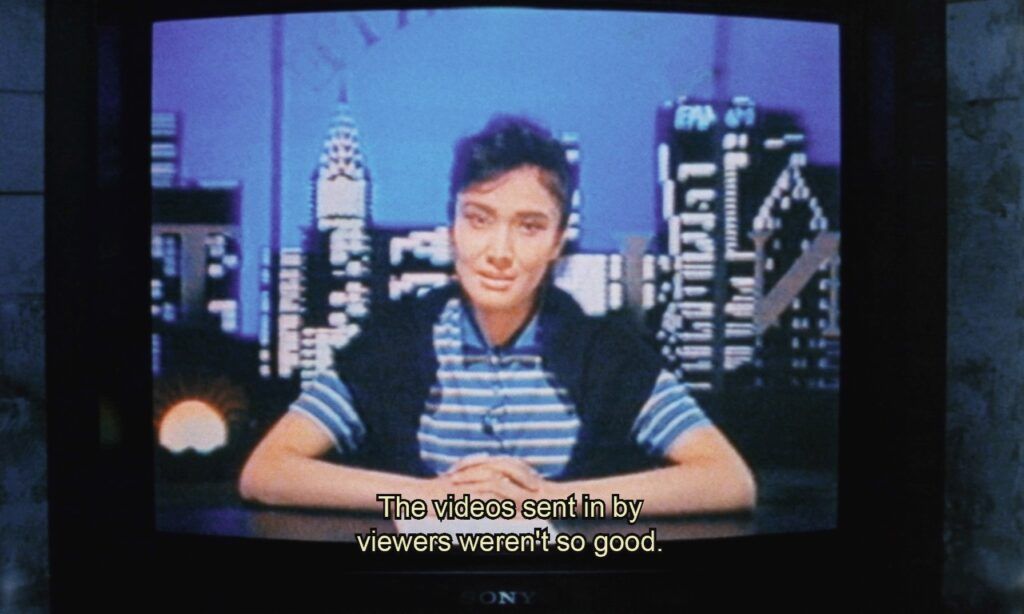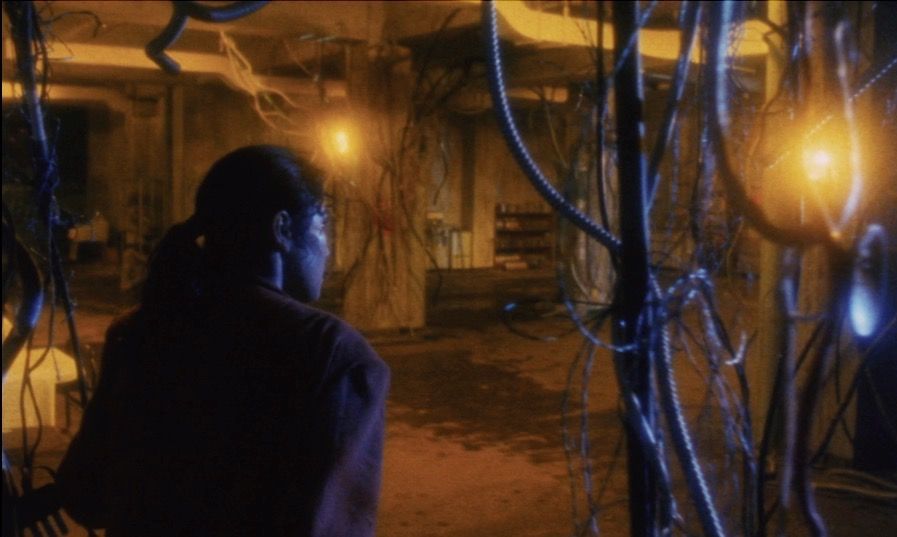Disclaimer: All opinions are those of the author, and do not reflect the opinions of DreadCult, staff or owner. Posts may contain Amazon affiliate links, marked with. If you purchase a product through one of these links, we recieve a small commission at no additional cost to you
Note: This article and the films referenced may be triggering for some people. This film contains graphic violence and a depiction of SA.
This is the movie that started my fascination with Japanese cinema. The first time I saw this movie was after the Synapse DVD release, around twenty years ago. At the time, I had very little knowledge of Japanese cinema outside of the bit of anime I had seen on the Sci-Fi channel, and at the time, my primary interest was in— and my primary exposure was to— American Slasher movies. Naturally, after seeing the cover, I had to watch it.
So, I picked up a copy, along with the Cronenbergian mind/eye-fuck Organ, a film accurately described by its creator(Kei Fujiwara; Tetsuo: The Iron Man) as “describing the feeling of rotting from the inside out,” and headed home. I was completely and utterly unaware of what I was getting myself into or that these two films would send me down a rabbit hole of some of the strangest, most disturbing, and most rewarding films I have ever seen. I didn’t—and still don’t—feel like I fully understand it, but goddamn if I don’t love it.

The movie begins with a down-on-her-luck television host, Nami (Miyuki Ono), receiving a particularly brutal snuff film, one which contains a lovingly(?) crafted recreation of the infamous Fulci “eyeball gag,” and ends with a photo of Nami and an invitation. Nami assembles her primarily female crew in hopes of finding a story that will save her struggling career, and the group heads out to investigate, retracing the suspected killer’s steps to an abandoned military base.
So far, this is all standard slasher stuff, and, to the keen observer, it feels much like a mashup of Hausu, Videodrome, with graphic depictions of violence borrowed from Guinea Pig.
I’d not yet seen Hausu, nor had I seen any of the Guinea Pig movies – a gap I would fill and regret filling soon thereafter — but had recently become marginally obsessed with Videodrome, and the apparent homage piqued my interest. I happily followed Nami and her team into the abyss.
That same homage, and the dozens of others like it, help the movie get its hooks into you—or at least for me, it did. It pulls you in with familiar tropes— a mysterious masked killer picks off innocents one by one in a creative, disgusting fashion, and sex carries a death sentence. Still, it always feels like something is going on below the surface. Much like Hausu carries us on a surreal, dreamlike adventure, Evil Dead Trap crafts a sort of night terror out of its patchwork of references, and it often feels like the film we are watching is not the whole story. It often feels like the movie is toying with you.

Visually, the film is very striking. Masaki Tamura’s (Lady Snowblood) cinematography is phenomenal. We see long shots down dark hallways, intercut with grainy security monitor footage of our news team; liberal use of Dutch angles makes everything feel claustrophobic and disorienting. The environments are dark and oppressive; there’s a palpable dinginess to every set piece. The kills are highly stylized, tight shots filled with bright reds contrasted against deep blue backgrounds (ala Blood and Black Lace), and no gory detail is spared. It feels, at once, surreal and disgusting, and often like you are watching something you shouldn’t be.
Tomohiko Kira’s score is fantastic. Most of the film uses different iterations of a Goblin-esque synth track. It gradually gets noisier and more distorted as it mutates from a classic Giallo-esque score into 80s industrial noise like you might find in an early Tsukamoto film.

This mutation happens alongside the storyline, shifting from a standard issue slasher-by-way-of-Argento to something entirely different. The most common complaint I have heard about the film is that the story starts to fall apart near the end, turning into more of a series of interesting scenes rather than a cohesive whole. My feeling is that this mutation is—mostly—intentional, some awkward translations notwithstanding, and much like the visuals and soundtrack, this is all part of a bigger goal to disorient you and keep you guessing whether or not you can believe what you are seeing. It seems like much subtext is buried in those confusing scenes, but your mileage may vary.
This film is a must-see for any Slasher, Giallo, or Japanese horror fan. It’s left an indelible mark on modern horror in film and video games—much of the Japanese New Wave of Splatter is heavily inspired by it, and you’ll have a hard time unseeing its influence on the survival horror genre.
It can be a bit of a difficult watch at times—there is a pretty unsettling scene of sexual assault, and it can start to drag on at times, but I think it’s gratifying if you can see past its few flaws. The “what-fuck-ness” of it will almost certainly give you plenty to chew on if you’re so inclined. This one, and the excellent sequel Evil Dead Trap 2:Hideki, are both available on Blu-Ray, from Unearthed Films.




